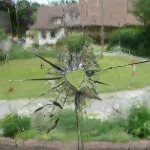
Nemo / Pixabay
The essence of sports-card collecting dwells in the hearts of ordinary hobbyists, not in the dugouts of professional dealers. This is primarily because of the personal relationships that inevitably blossom between the cards and their collectors. Usually dealers, at some time, were able to enjoy the pleasures of such interplay. However, the commercial aspects of entrepreneurship eventually sever the roots of this special bond.
Unfortunately, there are times when true hobbyists must part from the company of their valued sets. It may be a financial necessity that dictates this decision, or perhaps, it results from the old flame of desire fizzling out. Regardless of the reason, this is often a painful process. This is usually because the warm memories of a youthful and unique friendship are reflected upon and recalled with an undeniable fondness.
It is this sentimentality and a degree of innocence that allows earnest collectors to be victimized by the dealers, who hungrily wait in their dens. Therefore, it is necessary for hobbyists to adequately arm themselves with insight and exercise caution before entering these potential slaughterhouses of the soul. The simple, yet often overlooked ingredients of this preparation take the form of knowledge, patience, and ultimately the presentation of the collection.
My first venture into this area of personally merchandising a sports card collection sheds an informative radiance upon this important aspect of ordinary sport card collectors. Accordingly, it is with a sense of commitment that, I relay a message of hope to all my comrades, who share an enthusiasm and respect for the internal joy of sport card collecting.
Financial deprivation once forced me to take note of my proud football card collection. Although my personal attachment to these cards had eased through the years, I was touched by the pleasant memories that these cards still invoked within me. At that point, I remained unaware of my collection’s monetary value. However, because their individual ages spanned from eleven to seventeen years, I understood that this was a matter not to be taken lightly.
Mentally, I vowed not to repeat the failed manner in which I had sold my even more impressive baseball card collection eight years prior. It was then, after meeting a local dealer, who claimed he could offer only a token monetary gesture, I became convinced that there was no market place for the treasure that I held so dear to my heart. Consequently, without employing the virtue of patience, I vended this esteemed extension of my character to another individual, who was willing to pony up one hundred and fifty dollars. In a state of disappointment, I regrettably took the money in hand, left for the race track, and attempted to make up the difference between the money I received and what I felt was the true worth of my pride and joy. Sadly, in a few hours not only did I no longer have the baseball cards, now I had nothing, but worthless ticket stubs to show for my years of dedicated and devoted card collecting.
Yes, I had learned my lesson on that cloudy day and I vowed that this time the result would be different. I spent numerous hours stowed away in my basement organizing my football cards sequentially by season. I purchased a football card price guide and began the tedious task of deliberately analyzing my collection, in order to establish some measure of the collection’s collective worth. I discovered that among the varied assortment of values and conditions of the cards, the highlights included many cards that were valued in the twenty five to forty dollar price range. The jewels of the collection were three 1981 TOPPS Joe Montana rookie cards that at that time in mint condition had a book value of one hundred and fifty dollars a piece.
This pensive study had yielded two of the necessary ingredients essential for the successful completion of a sport card collection transaction. Now, I was equipped with the knowledge of an approximate monetary understanding of the value of my collection. Additionally, I had learned that in fairness to a potential dealer, I could expect to receive a sum that was less than the book value. As such, I thought my preparation was complete and accordingly embarked on an exhibition to peddle my merchandise in the lair of a local dealer.
I entered the shop and struck up a brief conversation with the owner. He expressed an interest in my commodities and immediately delegated his son to the task of sifting through the goods. It is important to realize that these people, because of their specialized interest in this area, know exactly how to scope this sort of mine. Therefore, I paid close attention to the son as he performed his assigned duty. I noticed his momentary pauses when he came upon particular cards that caught his fancy. Additionally, I remained acutely in tune to an unspoken dialog, as he shared periodic glances with his father. After the two of them had played out their mischievous ritual, the father nonchalantly offered me a coy one hundred dollars, explaining that some of the cards were not in mint condition.
Clearly, he took me as a fool, who could easily be manipulated and bamboozled. Resentfully, I pointed out that all of the higher valued cards did not universally possess the defects that he had alluded to. I clarified my position by specifically calling his attention to the three Joe Montana cards and cited their book value. The father seemed surprised with my knowledge and that perhaps his initial impression of me was incorrect. Tentatively, he asked what monetary exchange I had in mind for my cards. I responded that I had no interest in conducting business with an outfit that practiced and promoted such treachery. Thus, I employed the third aspect of necessary preparation, namely patience.
I realized however, in order to achieve my ultimate objective; I needed to hone my strategy for presenting my product on the open market. Consequently, I decided to organize my collection into three distinct subsets of cards. The first group consisted of those cards whose values were no less than one dollar. The second group included only those cards that ranged in value from fifty to ninety cents. All of the cards from these two groups, I placed in plastic protective sheaths. The last group of cards was simply those cards that are referred to as the common players. This last group is virtually worthless from a monetary standpoint.
Again, after much effort, I was ready to venture out among the buzzards of sport card dealerships. Ultimately, I came upon a little bookstore that also traded sports cards on the side. Luckily, at this time, the shop was interested in expanding its football card inventory. Shortly, an employee set to the task of sorting through my collection. However, he limited the span of his search to only those cards clad in plastic. Throughout the process, this fellow offered his compliments on the quality and integrity of my cards. However, about halfway through his travels, he abruptly stopped. He conferred with his boss and the boss decided that it was time to negotiate.
There were approximately thirty or forty cards under consideration, including the three jewels of the collection. The store presented an offer of four hundred dollars, which was shy of the six hundred dollars that I had in mind. Ultimately, the deal went down for four hundred and seventy five dollars. After handshakes all around, the boss invited me to return in the future, for he had an interest in purchasing more of my cards.
I left the site feeling a great sense of accomplishment. I had succeeded in obtaining a fairly large sum of money and still had possession of approximately one hundred and fifty of cards clothed in plastic garments and five thousand common players. Additionally, there was the prospect of selling more cards in the future. I was pleased that my time and efforts had rewarded me with such dividends.
Accordingly, I recommend that all ordinary sports-card collectors remember the concepts of knowledge, patience, and ultimately the presentation of their sports card collection if they decide that they are interested in performing a sales transaction for their collection.
Originally published on Associated Content / Yahoo Contributor Network (YCN) on March 24, 2009
© Copyright, Han Van Meegerin – All Rights Reserved















The buyers usually want to make a whopping profit off the cards. Good information for collectors of any type to arm ourselves with. It’s important to watch out for outright theft as well, not just in shops but anywhere you go.
Halle B, information unless it info overload is usually good to have. You are right, folks need to be careful. It’s a dangerous world.